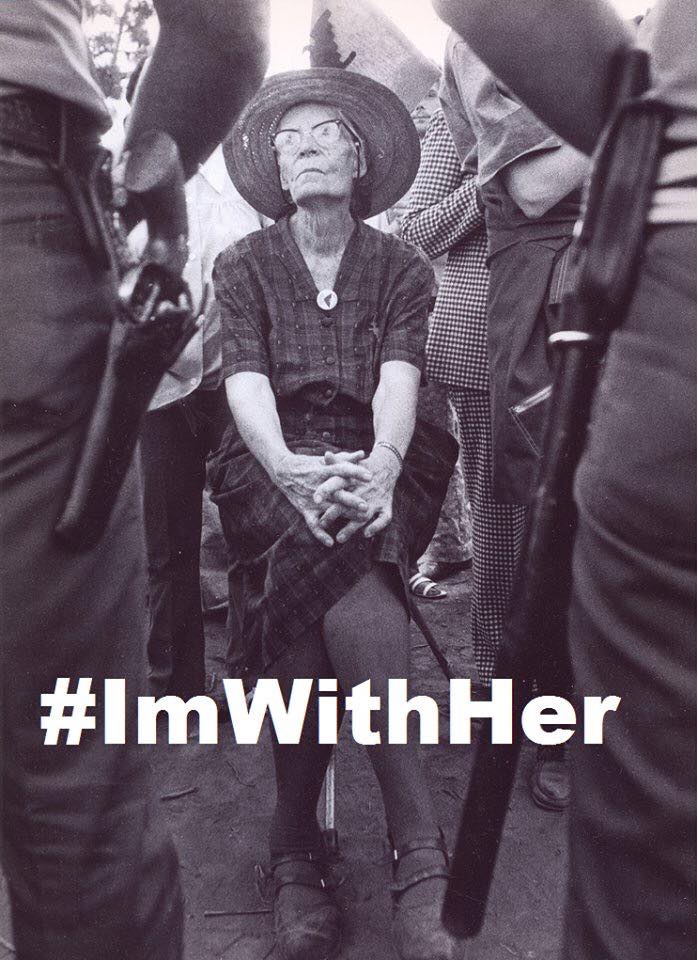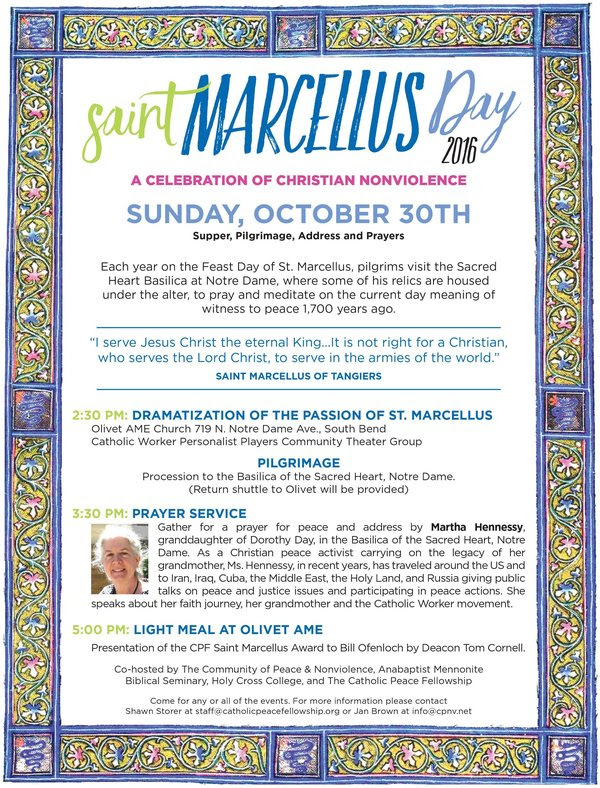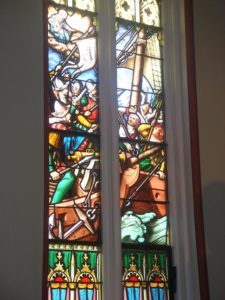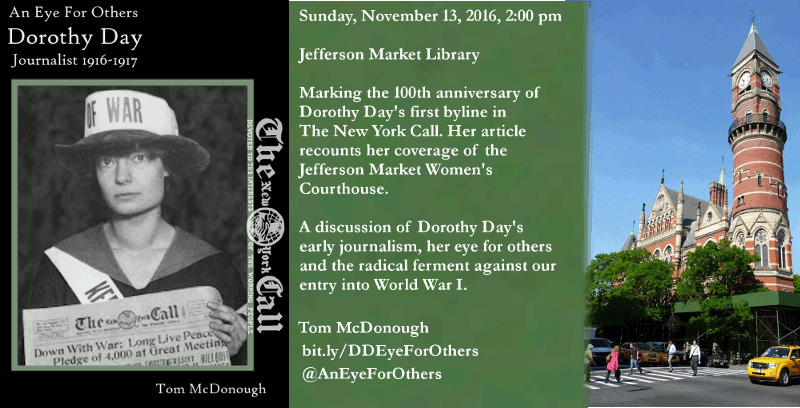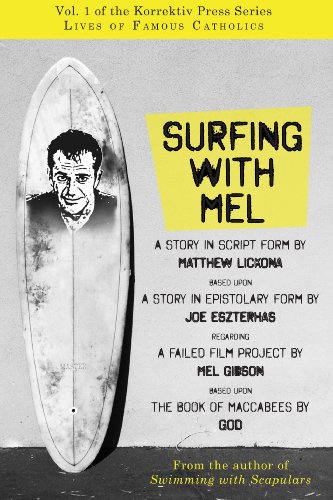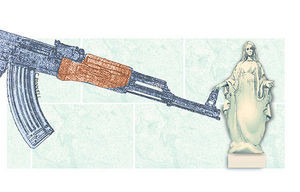Copyright © 2016 Ellen Finnigan
Originally published on November 4, 2016 on LewRockwell.com.
A Sheep Among Wolves
Desmond Doss was a real man but he seems more like the stuff of legend. Being a bit of a loner, small in stature, and meek, he was probably the last person anyone would ever peg for a potential war hero. He enlisted in the Army during the second world war because he believed in the cause. He only had one condition: He would not carry a gun. Make that two: He would not work on Saturdays. Though he did not receive an extensive formal education as a young man in West Virginia, he did receive excellent spiritual formation as a member of the Seventh Day Adventist Church: He took the Ten Commandments seriously, all of them, without exception or qualification, including “Thou Shalt Not Kill” and “Keep Holy the Sabbath.” He wanted to serve his country but a way that was consistent with the Way (the Truth and the Life). He wanted to be a medic. The military assigned him to a rifle company, naturally, figuring the heat of peer pressure would iron him out. Clearly they did not know the depths of character, courage, and conviction in Desmond Doss. They could not yet imagine how a man who refused to touch a gun could put up such a fight!
The incredible Hacksaw Ridge, the new film directed by Mel Gibson, tells amazing story of Desmond Doss, his decision to enlist, his difficult training and his unbelievable feats on the battlefield, for which he was eventually awarded a Congressional Medal of Honor. I attended an advanced screening of the film and had dangerously high expectations. I’m a Gibson fan, and I’d heard the film had received a 10-minute long standing ovation at the Venice Film Festival. I had watched the 2006 documentary based on Doss’s life, The Conscientious Objector (available on YouTube), and enthusiastically assigned it to my honors students after we read The Iliad and the The Aeneid this fall, thinking I had found the perfect thing with which they could compare-and-contrast the pagan idea of heroism.
With a few small reservations, I thought the film was excellent, but I have a few predictions as to how it will be received by the Catholic media, which has disappointed me in the past. My prediction is that the Catholic “Right” will promote this film under the banner of “religious liberty”, the Catholic “Left” under the cause of “conscientious objection,” but I believe both are reductive and shortchange the complexity of the film and the person of Desmond Doss. The “religious liberty” camp thinks that the great postmodern struggle is between Christians and secular society, but it was not the atheists, socialists, humanists, or communists who put Desmond Doss through hell in the military, who insulted him, persecuted him, and uttered every kind of evil against him, falsely. It was his fellow God-fearing, red-blooded Americans, whom we can assume were mostly Christians. While the other men were flipping through nudie mags in the barracks, Doss was studying Scripture. At first they dismissed him as a hick, a prude, a coward; grown men would throw shoes at his head while he was trying to pray. He was eventually ostracized, humiliated, harassed, and even beaten. His superiors tried to get him discharged for mental illness. They court martialed him. One soldier even threatened: “If you try to go to war with me, I’ll shoot you myself!”
“I don’t think I could have taken it,” said one man who knew Desmond Doss at boot camp. “I would have told them all to go to hell! But Doss—he never got angry.” In the documentary, his comrades recall Doss’ gentle demeanor, his lack of interest in retaliation, and his unwavering commitment to personal prayer. The actor who plays him, Andrew Garfield, should win an Oscar. He portrayed perfectly the endearing earnestness, quiet strength, and undeniable mystique of this most unusual man. Vince Vaughn adds the perfect touch of humor in his role as a sergeant who doesn’t hate Doss so much as find him incredibly exasperating. When Doss’ superiors would snarl and ask who the hell he thought he was and why he thought he was so special and why he wouldn’t just go home, Doss would respond, humbly, by saying that in a world that was falling apart, he didn’t see anything wrong with someone trying to put a small piece of it back together. He wanted to serve his country. He wanted to serve them.
And this is where he doesn’t quite fit the profile of the typical “conscientious objector.” When the military tried to send him to a conscientious objector camp, he insisted on going to war! Doss believed that the United States was fighting for freedom, including religious freedom, and that it was an honor to serve his God and his country. He wanted to serve–but in a way that was consistent with his beliefs. His beliefs were very simple: He couldn’t picture Jesus killing people, but he could picture Jesus with a first aid kit. He preferred to be called a “conscientious cooperator.” He thought he could be just as good a soldier as anyone else, only: “Where other people are going to be taking life, I’m going to be saving it.”
This is what makes him a hero for our times. So many folks try to say that going to war or not going to war, which is always couched in terms of defending something or not defending something, is a choice between “doing something” and “doing nothing.” It’s the old false dichotomy of fight or flight. Either you fight, or evil runs rampant in this world. Jesus did neither and Desmond Doss shows us that a third way is possible. One of my favorite anecdotes in the documentary is when Doss says that his superiors tried to convince him of the errors of his ways by posing an age-old question, a hypothetical akin to: “What if someone was raping your grandmother and you had a gun?”
Desmond Doss replied simply: “I wouldn’t have a gun!
And that’s the truth.
To the screening they invited people from the religious community as well as the military community. The publicists who introduced the film explained, in warm, beige tones, that it was a film about faith — and heroes. Polite applause. It is understandable that marketing execs would want to cast as wide a net as possible, but to say that this is about faith is to gloss over the obvious challenge it presents to people of faith. Faith in what? In the words of Rev. Emmanuel Charles McCarthy, the central question of all religion is: What kind of god is God, and what does God expect of us, if anything? The fact that Desmond Doss answers this question differently than his fellow Christians is the very thing that creates the conflict at the center of the story; it is the engine of the drama. We don’t watch Hacksaw Ridge, rapt, in order to find out if our hero will successfully vanquish the enemy, because our hero for a change has absolutely no interest in that, either the enemies he faces on the battlefield – the “Japs” – or the enemies he creates in his own tribe. We watch to see if our hero will be defeated and defeat seems likely: Either he will stand by his convictions, run onto the battlefield, and lose his life (in this world), thereby proving he is a fool, or he will pick up the sword, save his life (in this world), and admit that his convictions were foolish. What other outcome could we reasonably expect? What other outcome could we possible imagine?
“Nobody can understand what he did on that ridge,” said one of his comrades, “nobody.” I could talk to you all day long and you could never understand it. You would never believe it.”
In Guam, stories began to circulate about a medic who would doggedly pursue the wounded and try to help them– no matter what. (He was eventually allowed to go into battle as a medic unarmed.) It didn’t matter who they were, how badly they were wounded or how badly they had treated him. Doss would help them, often ignoring the rules of triage. His motto was: “As long as there is life, there is hope.” But the depths of bravery, compassion, and fortitude in Desmond Doss weren’t fully comprehended until Okinawa, where his actions on “Hacksaw Ridge,” a 400-foot cliff so named because of the Japanese ability to chop up Allied forces and spit them out, became legendary, maybe even miraculous.
After the screening, a man who was a friend of Desmond Doss’ spoke to us and assured us of the film’s accuracy. I trust it is accurate, but it didn’t strike me as complete. Obviously, every screenplay has limitations. They can’t include everything, but there are things in the documentary that were left out of the film, or at least not highlighted in the film, and they are important to understand the full picture.
In the film, Doss is shown being incredibly brave under fire, but the filmmakers do not convey just how impossible it was for him to survive or to do what he did. He was one of three men to hang the cargo net from the ledge of the Hacksaw Ridge. He volunteered. (In the film, if I remember correctly, he arrives and the net has already been secured.) You see: to hang the net was impossible, because you would have to get up on the ledge where the Japanese had clear lines of sight from their fortified positions. To maximize your chances of survival, you had to stay low to the ground, crawl, and even then, your chances were scant. There is a photograph of Desmond Doss standing up — silhouetted — on the ridge. He didn’t get shot. The guns were silent while he was up there. Why? How? Nobody could explain it.
The net allowed the Americans to scale the cliff, from which point they could try to take the ridge. They climbed up and got driven back down twice before they succeeded. On top, it was a bloodbath. Not only did Desmond Doss run out time and time again into enemy fire, defying all odds of being shot and killed, or captured and tortured, but as a man of slight stature, he did what Arnold Schwarzenegger couldn’t do in his heyday: He singlehandedly dragged and/or carried 75 men from up to 125 feet away to the cliff, secured them with a special knot, and lowered them down – again, singlehandedly — over the 400-foot cliff to safety. He saved 75 men in twelve hours, which meant he saved one man every 10 minutes. Desmond Doss’ friend who spoke at the screening said that Desmond once told him that after he had carried and lowered the first three men, he had absolutely no physical strength left. None. He just kept repeating the prayer: “Please, Lord, let me get one more. Please, Lord, let me get one more.”
The speaker at the screening also told us that Andrew Garfield, who played Desmond Doss, who is a lanky guy like Doss, was taught the “fireman’s carry,” which is the way Doss would have been trained to carry big, heavy, injured, helpless men. After the first few takes, they had to call in a stunt double. He wasn’t strong enough to pull it off take after take after take. As one of Doss’ comrades pointed out, many soldiers receive the Medal of Honor for one act of extreme bravery in war; but in Doss’ case, the Medal was awarded for things he did over and over and over again. There are stories about a Japanese soldier who remembered having the American medic in his crosshairs; when he went to shoot him, the gun jammed. There are stories of Japanese soldiers being found with American bandages on them.
What was happening on that ridge? How were these things possible? Could it have something to do with what Desmond Doss, as conscientious cooperator, was cooperating with, rather than what he was objecting to?
Rev. Emmanuel Charles McCarthy begins his book All Things Flee Thee for Thou Fleest Me* with a quote by Jacques Ellul:
“God intervenes radically only in response to a radical attitude on the part of the believer – radical not in regard to political means but in regard to faith; and the believer who is radical in his faith has rejected all means other than those of faith.”
The question of violence is a question of means. Desmond Doss probably shared many of the same ends as other soldiers of faith: to stop evil, to stop evil from spreading, to save lives, to bring about peace, to save his soul, to get to heaven. But the difference between Desmond Doss and the other soldiers is that Desmond Doss rejected all means other than those of faith, specifically faith in the God, the God who is Love. This is because the Seventh Day Adventist Church had taught Desmond Doss that the means of violence were not available to him as a Christian and were not compatible with Love. When mainstream Catholics understand this about Desmond Doss, they understand at once that he is an “other” kind of Christian, with a different faith. Is it a different faith?
This is another important question.
The epic heroes of ancient literature are warriors and they are men of faith. Achilles, Hektor, Odysseus, Aeneas: they believed in the supernatural, they had certain ideas about the nature of the divine, they engaged in religious rituals and practices meant to appease the gods and win their favor. Aeneas is described by Virgil as being “patently pious,” pietas being a Roman virtue that meant duty to man, God and country. The faithful and pious would be rewarded by the gods, often with military victories. The gods could be violent, deceptive, and vengeful; to be godlike was to partake of the awful power of the gods, to exercise might. When these heroes succeeded in battle, they believed the gods were on their side; when they lost, they assumed the gods had forsaken them. They had faith, but a certain kind of faith in a certain kind of god. The pagan gods could be drafted.
Desmond Doss was a social pariah until he became a kind of mascot. In Okinawa his Bible, his personal prayer, and his faith were no longer things to be laughed at but to be embraced and rallied behind. It is a fact that the third big siege on Hacksaw Ridge happened on a Saturday, May 5, 1945. The men asked Desmond Doss if he would go with them. Doss said maybe, but he would need time to pray about it first. The story goes that the whole unit, or company, was held up on account of Desmond Doss needing to pray. They waited, and hoped. After praying Doss decided that this was the kind of work he could do on a Saturday and he went with them. Perhaps I was being overly defensive, but in the film they almost made this decision look like a compromise. It wasn’t. Desmond Doss was tempted on various occasions to kill in defense of self or others, but he didn’t: He said that if he compromised once, he was likely to compromise again. The closest he came was when enemy troops threw a grenade into a ditch where he was trying to help some wounded men: He did pick it up and throw it back out. His decision to go with his unit on that Saturday was not a compromise: It was perfectly in line with the story of Jesus healing on the Sabbath.
On that day they took the ridge. Many people attribute this victory to “faith,” either the faith of Desmond Doss or the faith he stirred in others after they began to believe that he had something like the power of God behind him. What’s wrong with this picture?
In the film, it appears that the very same God who Desmond Doss was praying to, who Doss believed would tell him, “If you love me, you won’t kill anybody,” who Doss believed he was glorifying with his works of courage, compassion, strength, and love, and who may have helped Desmond Doss to comfort, heal and save all those people, is the very same god who then turned around and helped Doss’ comrades to burn Japanese people’s faces off. If we are being honest about it, these are two different gods, and two different faiths. It is rare that they are seen in such stark relief as they are in Hacksaw Ridge.
Where one asks, “Please, Lord, just let me get one more,” and means save one more life, the other asks, “Please, Lord, let me get one more,” and means take one more life.
Where one says, “Love your enemies,” the other says, “Protect your friends.”
One says “Put down thy sword,” the other says “Pick it up.”
Where one says, “Love the Lord your God with your whole heart, whole soul, whole strength, and whole mind,” the other says, “Hate your enemy with your whole heart, whole soul, whole strength, and whole mind.”
One preaches against enmity, the other assumes it.
To help the enemy in one is considered love, to help the enemy in the other is considered treason.
Where one relies on the power of prayer, trusting completely and totally in Jesus, and willing to love nonviolently both friends and enemies until death, the other relies on the power of violence, trusting in government and is willing to kill enemies even unto death.
To live in the spirit of one of these gods is to bring about love, joy, peace, patience, kindness, goodness, faithfulness; to live in the spirit of the other is to bring about what we see happening on Hacksaw Ridge.
The Catholic Church tries to tell us that these are the same faiths and the same gods, two sides of the same coin if you will. What makes this film so important is that it gives us a concrete portrayal of a larger conflict that has been going on within Christianity for 1,700 years, not only among different sects and churches but also within Catholicism itself. In “A Harvest of Justice is Sown in Peace” (1993), the United States Conference of Catholic Bishops tells us: “The Christian tradition possesses two ways to address conflict: nonviolence and just war.” Where the Church sees a “dual tradition,” more and more people are beginning to see a house divided against itself. Insofar as the Catholic Church “possesses” the tradition of nonviolence, we agree with the Protestant denominations that have come to be known as the “peace churches” (The Quakers, Mennonites, etc.), but insofar as we teach what – frankly — Jesus never taught, by word or deed, namely, Just War Theory (now called Just Defense Theory), we part with them. The Catholic Church tries to tell us that there is no conflict between these two ways of dealing with conflict, that these two ways are not opposed to one another, nor is either way opposed to the Way of Jesus, in whom we Christians live, move, and have our being, that they are separate but equal, equally holy, equally good, equally acceptable. Yet, should one dare to speak out in favor of nonviolence, one would be no more welcome in the Catholic Church than Desmond Doss was in his rifle company. Trust me, I know!
This conflict is currently playing out at the highest levels of the Catholic Church. In April of 2016, the Pontifical Council for Justice and Peace at the Vatican and the international Catholic peace organization Pax Christi held a conference, called “Nonviolence and Just Peace: Contributing to the Catholic Understanding of and Commitment to Nonviolence” and included 80 participants from around the world who represented a broad spectrum of experiences in peacebuilding and active nonviolence in the face of violence and war. The participants called on Pope Francis to consider writing an encyclical letter, or some other “major teaching document,” reorienting the church’s teachings on violence. The “Just War” Christians have been freaking out ever since in fear that the Holy Catholic Church, under the “leftist” leadership of Pope Francis, will abandon the teachings on Just Defense, which everyone knows provides a crucial loophole in Jesus’ teachings, through which the Christian can ensure the earthly protection of himself, his family, his friends, his country. It would be a nightmare to deprive Christians of recourse to violence, right? They would be sitting ducks with nothing but their “faith” to protect them in a hostile and violent world. And I believe in this context the Just War camp would put “faith” in quotation marks, because what kind of faith is that stupid and foolish?
Hacksaw Ridge is indeed a film about faith, but not in the way the publicists meant it. As Jacques Ellul puts it: “The appeal to and use of violence in Christian action increase in exact proportion to the decrease in faith…Unbelief is the true root of the Christian championship of violence.”
Let’s hope that the film Hacksaw Ridge can teach American kids what the Catholic Church has failed to teach them. One of my students, after watching the documentary, exclaimed: “And he wasn’t even a Catholic!” This sweet child imagined that someone so good and so holy could only be the product of the one, true faith. It took my whole heart, my whole strength, my whole mind to refrain from replying sarcastically: “Thank God for that, because if Desmond Doss had been raised Catholic, he would have had little to no chance of becoming Desmond Doss.”
Copyright © 2016 Ellen Finnigan
